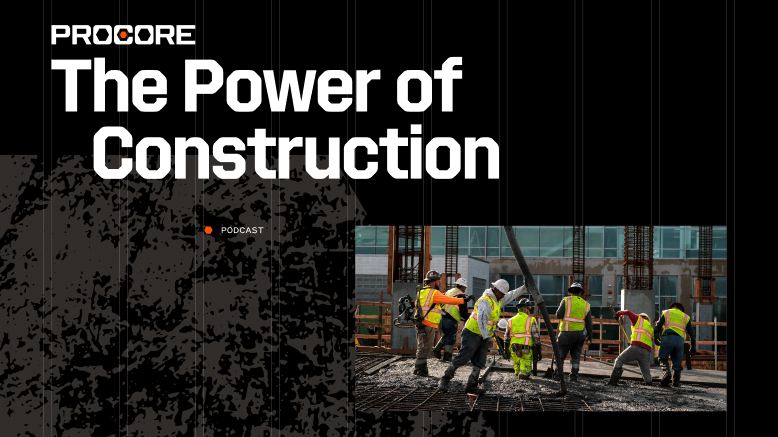— 12 min read
What’s in a Bid Package?


Last Updated Jun 17, 2024

Michael Giusti
Michael Giusti is the Journalism Department Chairman and Director of Student Media at Loyola University New Orleans. He has worked as a journalist and writer for more than two decades, covering industries ranging from construction to insurance, finance, and logistics.

Mike Jennings
Strategic Product Consultant, Owners
Mike Jennings is a dedicated military veteran with a deep experience in construction project management, surveying, and drafting. His significant achievements include overseeing over $60 million in government construction projects. At Procore, Mike consults with project owners to implement robust financial management software.
Last Updated Jun 17, 2024

A bid package is a set of project documents provided by the owner to potential contractors during the bidding phase of a construction project. Also known as a tender package or bid documents, the bid package outlines the project’s scope, requirements, and specifications, enabling contractors to develop an accurate and competitive proposal. It serves as the basis for the preparation and submission of bids and ensures that all bidders have consistent and complete information to work with.
Bid packages can be used with either an invitation to bid (ITB), a request for proposal (RFP), or a request for tender (RFT). With an ITB, the client will likely provide a very specific scope of work and contractors will compete mainly on price, whereas an RFP or RFT may contain less detailed specifications so that contractors can compete on approach as well as price.
Whether they are for large public works projects or a private development, bid packages largely contain the same essential elements, with some variation to account for local laws or project-specific details. Below, we will describe the key elements common to most bid packages.
Table of contents
Items included in a bid package
Taking a high-level look at a typical bid package reveals many common elements.
| Item | Description |
|---|---|
| Cover sheet | Contains basic project details like site location, timeline, and contact information |
| Instructions to bidder | Provides deadlines and submission guidelines for bid, site visits, and RFI questions, as well as evaluation criteria and contract award process |
| Project specifications | Presents technical descriptions that define the materials, workmanship, quality standards, and performance requirements for each aspect of the project |
| Construction drawings | Offers a visual representation of a project’s design and scope, including site, structural, architectural, and systems drawings |
| Bill of quantities and/or bill of materials | Lists comprehensive details about the materials, components, assemblies, and labor required to complete the project. |
| General conditions | Lays out the administrative and managerial responsibilities of project stakeholders |
| Special conditions | Explains additional details about site-specific or project-specific conditions that must be taken into account |
| Bid form | Describes the standardized format contractors are required to use when submitting their bids |
| Bid security | Requires a financial guarantee that the bidder will enter contract at the proposed price if awarded the contract (most common in public projects) |
In the rest of the article, we’ll take a closer look at all of these features and how they affect the bidding process.
1. Cover sheet and instructions
The bid package’s cover sheet includes basic project details as well as relevant information like points of contact or site visit dates.
The cover sheet generally also includes a section with instructions to bidders, which covers a number of important details related to the bidding process and submission of bids. Here are some instructions bidders are likely to see:
- Bid preparation guidelines, including details about formatting and required documentation, availability and times of site walkthroughs, and RFI submissions.
- Bid submission guidelines, like where to submit bids (in person or electronically), deadlines, and any other procedural details (like sealed bidding guidelines)
- Evaluation criteria that explain how bids will be compared
- Contract award process outlined with details on timeframe, methods for notifying the winning bidder, and how the contract will be executed
- Withdrawal or modification instructions, if allowed, for rescinding a bid or making changes before the deadline
On public projects, the cover sheet may also list requirements for prevailing wages or subcontractors, like a certain percentage of women-owned, veteran-owned, or minority-owned businesses.
Project owners need to create a clear set of instructions for bidders — especially when it comes to how bids are formatted and submitted. When bids arrive in a consistent format, project owners can more easily compare bids. Contractors, meanwhile, must understand the submission guidelines clearly so that their bids are considered during the evaluation process.
Explore data and trends for building materials prices.
Get the latest U.S. retail prices and view historical trends for common building materials.
2. Construction documents
The most substantial parts of the bid package are the project specifications, drawings, and bill of quantities or the bill of materials. Each of these provides contractors with an overview of the project’s scope, which they’ll use to create an accurate estimate of the project’s cost.
Project specifications
The project specifications are detailed technical descriptions that define the materials, workmanship, quality standards, and performance requirements for various aspects of the project. They serve as a comprehensive guide for contractors to understand the project owner’s expectations and requirements, ensuring that the final constructed project meets the desired outcome.
Specifications offer information about a number of different building components, including structural elements, mechanical systems, electrical systems, and architectural features. In combination with drawings, construction specifications offer a very clear picture of the project.
Notably, specifications also include general requirements, which provide details about how the project must be managed, including details like temporary site facilities, trash removal, safety procedures, payment procedures, submittals, contract modification, and more. All of these requirements will affect a contractor’s bid as part of their general conditions.
Specifications can be performance, prescriptive, or proprietary, with increasingly stringent requirements.
- Performance specifications indicate the desired outcome rather than outlining specific materials or methods.
- Prescriptive specifications provide explicit instructions on the materials and methods to use on the project.
- Proprietary specifications are even more specific, indicating required materials, products, or systems from a particular manufacturer or supplier.
Project owners must determine the level of detail to use with project specifications in order to balance cost and outcomes. For instance, highly specific materials and methods are often more costly and may limit the number of qualified contractors. On the other hand, less detailed specifications can make it more difficult for owners to level bids and compare them side by side — and could lead to disputes during construction or a substandard finished project.
Drawings
The drawings included in a bid package offer a visual representation of a project’s design and scope. Some of the drawings commonly seen in a bid package include:
- Site plan
- Floor plans
- Elevations
- Sections
- Details
- Schedules
- Structural
- Mechanical, Electrical, and Plumbing (MEP)
- Landscape
In some cases, clients will provide bidders with a 3D model, which enables many layers of information to be accessed simultaneously, increasing efficiency in cost estimating by using automated 3D takeoffs.
Depending on how far along in the design process a project is when contractors are brought on, drawings may be at different levels of completion.
- With a traditional design-bid-build (DBB) project, a client typically issues an invitation to bid (ITB) with construction drawings, which are considered 100 percent complete — though small changes may occur during construction.
- With a design-build (DB) project, a client may issue a request for proposal (RFP) with only design drawings, which are fairly detailed but still have room for change as the contractor collaborates with the design team to ensure a cost-effective project.
- With an integrated project delivery (IPD) project, a contractor may receive a bid package that contains only schematic drawings, which are preliminary sketches that indicate the general direction of the project, which the design team will clarify in tandem with the contractor.
In any case, construction drawings are essential for the estimating process, as contractors will use them to perform material takeoffs and determine equipment and labor needs.
Bill of materials or bill of quantities
A bill of materials (BOM) is a comprehensive list of all of the materials, components, and assemblies needed to complete a construction project, while a bill of quantities (BOQ) provides a detailed list of materials and labor required for a construction project.
Both of these documents are typically prepared by a quantity survey, cost estimator, or a member of a design team. They break down work and materials into sub-groups, assign units of measure, and provide quantities needed for each item (or estimated quantities if the scope is unclear) broken down into specific work packages.
The owner or general contractor will include a breakout request for specialty contractors to provide information about the quantity, type of products, vendor, and cost information for a specific work package. For example, a specialty contractor performing framing on a building project would provide information on the quantity and type of lumber needed, their chosen vendor, and the cost per unit.
Contractors use the bill of quantities or bill of materials during the bidding process to prepare their cost estimates and submit their bids for the project. By providing a standardized format for pricing the work, the BOQ or BOM simplifies the bid leveling process and helps the project owner in selecting the most competitive bid.
Not all bid packages include a BOM or BOQ, and even if they are included, the level of detail may vary according to the project’s requirements. On lump sum projects, in which a fixed price is provided by the contractor for the entire scope of work, a bill of materials or bill of quantities is rarely included.
On the other hand, contracts using unit pricing, which pays contractors for the actual quantity of work completed or materials used, tend to use a BOM or BOQ, which are used throughout the project to track progress, manage costs, and process progress payments.
3. General and supplemental conditions
A bid package also contains information about the project’s general conditions and supplemental conditions, which lay out the responsibilities and expectations of project stakeholders. These conditions are often listed as general requirements in Division 1 of the project specifications, though they are typically also incorporated into the construction contract.
General conditions set the framework for how the project will be managed, administered, and executed. Frequently, construction professionals refer to general conditions as “the rules of the game.” Some of the areas covered by general conditions include:
- Project management: How are communication, documentation, and reporting handled? What are the responsibilities of various stakeholders, including the owner, contractors, and design team?
- Site management: How will the site be accessed? How is waste removed from the site?
- Permits, licenses, and regulations: Who is required to obtain permits, licenses, and approvals? What specific laws, codes, and regulations are applicable to the project?
- Insurance and bonding requirements: What insurance policies and bonds are stakeholders required to have? What coverage limits are necessary?
- Change orders: What is the process for changing the scope of the contract? How are change orders submitted, removed, and approved (or denied)? How is the cost for change orders handled?
- Payment terms: What is the payment schedule? How are invoices managed? Does the project have retainage, and if so, what percentage?
- Dispute resolution: How are disputes mediated and resolved? What is the process for arbitration and litigation, if necessary?
- Project closeout and warranty: What are the requirements for substantial and final completion, punch lists, and transfer of ownership? Does the contractor provide any warranty for their work?
In addition to these general conditions, the bid package may also include information about supplemental conditions, which clarify unique circumstances related to the project. For example, supplemental conditions may include information about specific construction methods, unique local ordinances, environmental considerations, site-specific conditions, or additional insurance requirements.
General and supplemental conditions are essential for contractors to consider when reviewing a bid package. The administrative and managerial tasks required to fulfill the general conditions will add to the project’s costs, so contractors need to include general conditions as a line item in their estimates.
For owners, general conditions set the framework for how the project will be completed, ensuring that the project carries on as they intend. However, owners must be aware of the cost associated with conditions. Restrictive, burdensome, or extensive general conditions will increase a project’s overall cost, so owners must stay mindful of finding a balance between budget and outcomes.
4. Bid form
The bid form is the standardized document that contractors must use to submit their bids for the project. Whether the bid form is a paper document (as is common in public construction) or an electronic document (now common in private construction), it will likely require some of the following details:
- Bidder’s information: The contractor’s name, address, contact information, and other relevant details.
- Bid: Depending on the contract type, the bid could be expressed as a lump sum, itemized amount, guaranteed maximum price, or cost-plus fee.
- Other pricing information: Information about unit pricing for specific materials and tasks.
- Alternates: Costs for alternate materials, methods, or designs (may not be permitted by certain owners and especially on public projects).
- Schedule: Proposed timeline for the project including expected date of completion.
- Signature and date: Acknowledgment that the bidder agrees to the terms and conditions outlined in the bid package at the specific price.
Bid forms can vary widely from one project owner to the next, and some projects may require additional information about specialty contractors, pricing, scheduling, bonding, insurance, or personnel.
Additionally, public projects may have additional requirements according to federal, state, and local laws. For example, most public projects would require proof of a bid bond (also called bid security) as part of submitting a bid. This security provides a financial guarantee that the contractor will perform the work in the bid package at the listed price point if awarded the contract.
Considerations for owners
The old adage says that construction projects succeed and fail in preconstruction. When an owner begins to put together a bid package, they have an opportunity to set their project up for success. By including thorough and clear project specifications and construction drawings as well as a bill of materials and quantities, they are able to mitigate financial risk by empowering contractors with the information they need to provide an accurate bid.
Additionally, creating a standardized bid form that enables contractors to submit detailed line-item pricing ensures that owners will be able to level bids after they are received, making it easier to choose the bid with the best value. In short, preparing a thorough bid package is a crucial step toward guiding a project toward successful completion.
Was this article helpful?
Thank you for your submission.
97%
3%
You voted that this article was . Was this a mistake? If so, change your vote
Scroll less, learn more about construction.
Subscribe to The Blueprint, Procore’s construction newsletter, to get content from industry experts delivered straight to your inbox.
By clicking this button, you agree to our Privacy Notice and Terms of Service.
Thank you!
You’re signed up to receive The Blueprint newsletter from Procore. You can unsubscribe at any time.
Categories:
Written by

Michael Giusti
Michael Giusti is the Journalism Department Chairman and Director of Student Media at Loyola University New Orleans. He has worked as a journalist and writer for more than two decades, covering industries ranging from construction to insurance, finance, and logistics.
View profile
Mike Jennings
Strategic Product Consultant, Owners
Mike Jennings is a dedicated military veteran with a deep experience in construction project management, surveying, and drafting. His significant achievements include overseeing over $60 million in government construction projects. At Procore, Mike consults with project owners to implement robust financial management software.
View profileExplore more helpful resources

What Happens When Data Drives the Business?
Construction has long been seen as a low-margin industry. But what if the real problem isn’t the margins—it’s how decisions get made? In episode 17 of The Power of Construction,...

Vet Contractors with Confidence: A Guide to Smart Bidder Selection
Selecting the right bidder is one of the most consequential decisions a construction team makes — yet it often happens under tight deadlines, with limited visibility into the long-term implications....

The Construction Bid Interview & Follow-up: Closing the Deal
During construction project bidding, the interview is often the last part of the request for proposal (RFP) process and one of the most influential. For teams that advance to the...
Construction Business Development: Tracking and Winning the Right Opportunities
Construction business development isn’t just a response to deadlines: It’s a long-term strategy rooted in focus, visibility and timing. Delays, funding gaps and market pressure have made it harder to...
Free Tools
Calculators
Use our calculators to estimate the cost of construction materials for your next project.
Templates
Find a template to help you with your construction project tasks.
Material Price Tracker
Get the latest U.S. retail prices and view historical trends for common building materials.
Glossary
Explore key terms and phrases used in the industry.
